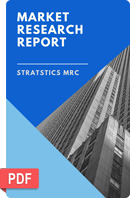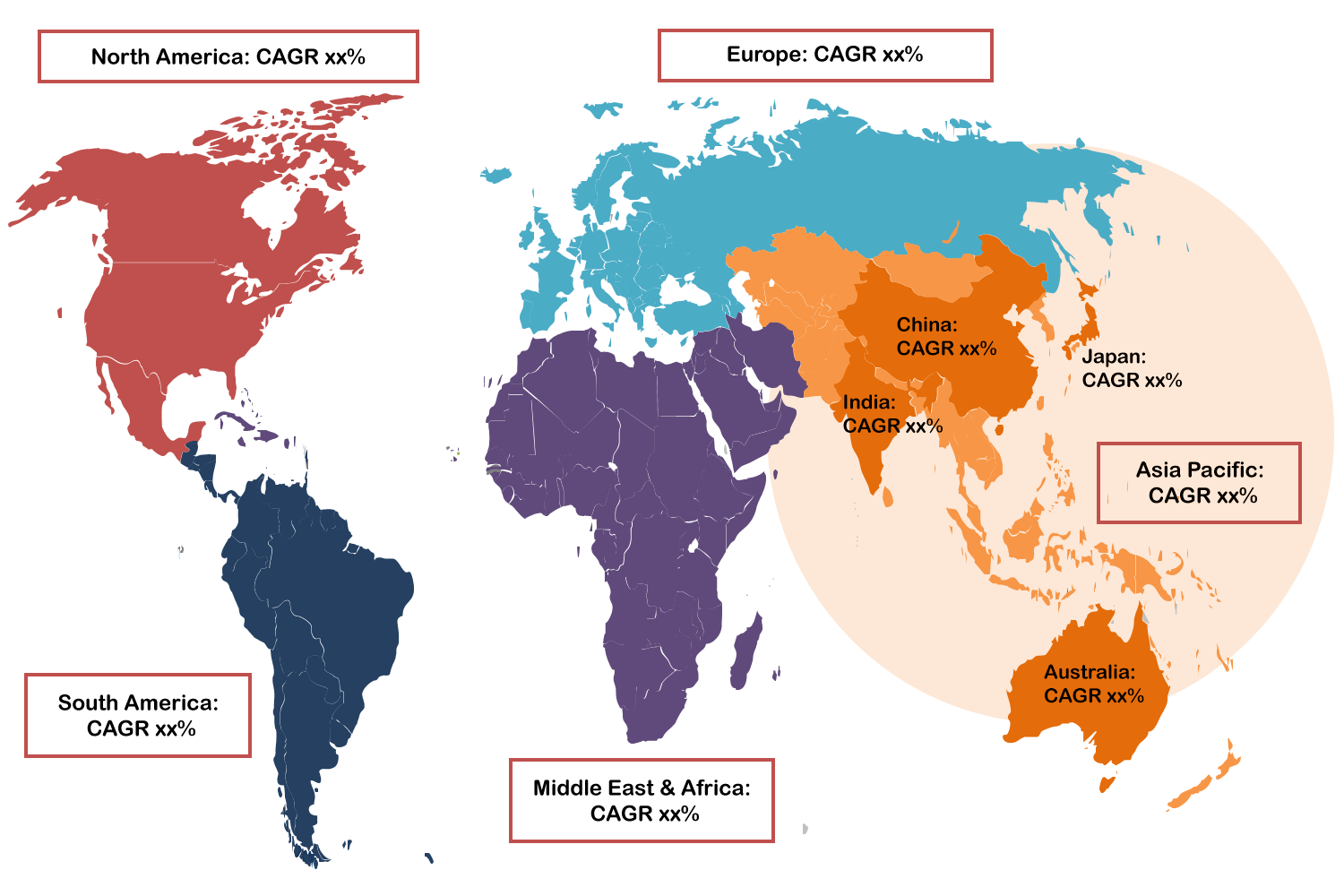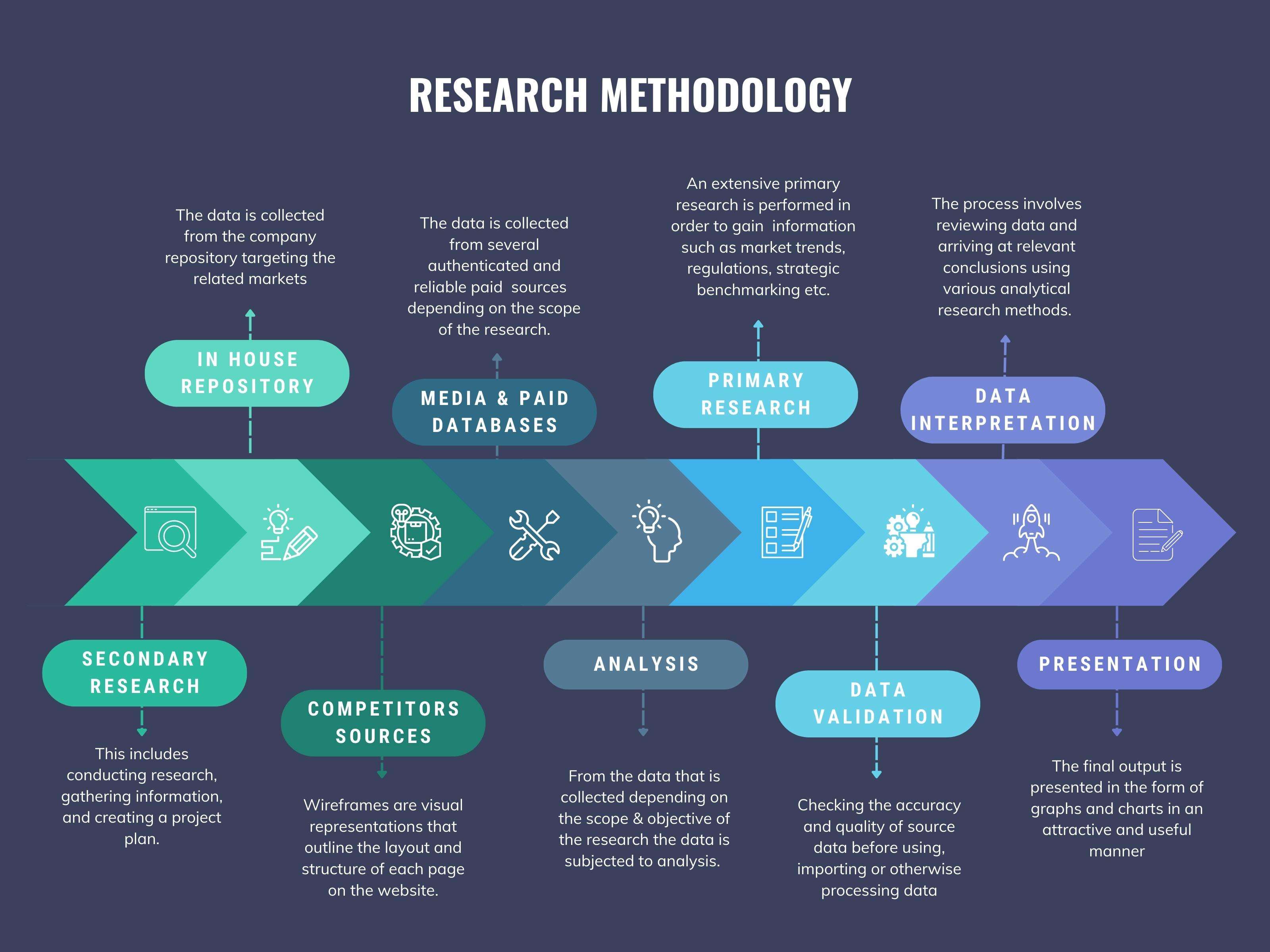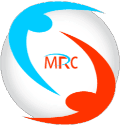
Polar Polymers Market
Polar Polymers Market Forecasts to 2030 - Global Analysis By Type (Polyvinyl Alcohol (PVA), Polyacrylonitrile (PAN), Polyvinylpyrrolidone (PVP) and Other Polar Polymers Types), Source (Bio-based and Chemical-based), Production Process, End User and By Geography

According to Stratistics MRC, the Global Polar Polymers Market is accounted for $235.9 billion in 2024 and is expected to reach $340.4 billion by 2030 growing at a CAGR of 6.3% during the forecast period. Polar polymers are a class of polymers characterized by the presence of polar functional groups, such as hydroxyl, carboxyl, or carbonyl groups, within their molecular structure. These groups create strong intermolecular interactions, leading to higher solubility in polar solvents, increased adhesion, and greater mechanical strength. Common examples include polyvinyl alcohol (PVA), polyacrylic acid (PAA), and nylon. Polar polymers are widely used in various applications due to their compatibility with various substrates and functional versatility.
According to a review published by the National Science Foundation, global production of polyethylene glycol (PEG) has been steadily increasing and is currently approaching 600,000 tons annually.
Market Dynamics:
Driver:
Advancements in polymer technology
Advancements in polymer technology are a significant driver for the polar polymers market. These advancements include the development of new polymerization techniques such as controlled/living radical polymerization, which enhance the properties of polar polymers. Improved characteristics like higher thermal stability and chemical resistance have broadened their application across industries such as automotive, electronics, and healthcare. These innovations enable manufacturers to produce more efficient and versatile materials, meeting the increasing demand for high-performance polymers in various sectors, thus propelling market growth.
Restraint:
Environmental concerns
Environmental concerns pose a restraint on the polar polymers market. The growing awareness of plastic pollution and its impact on ecosystems has led to increased regulatory scrutiny and consumer demand for sustainable alternatives. Governments and regulatory bodies are enforcing stricter regulations to reduce plastic waste, pushing manufacturers to invest in eco-friendly materials and processes. This shift necessitates significant investments in research and development to create biodegradable or recyclable polymers, which can increase production costs and impact profit margins.
Opportunity:
Demand for biocompatible materials in healthcare
The demand for biocompatible materials in healthcare presents a significant opportunity for the polar polymers market. Polar polymers are increasingly used in medical devices, implants, and drug delivery systems due to their compatibility with human tissue and high solubility. The healthcare sector's emphasis on innovative solutions drives the development of advanced polar polymers that meet stringent safety and performance standards. This trend is expected to accelerate as medical technologies evolve, creating new avenues for growth in the polar polymers market.
Threat:
Competition from alternative materials
Competition from alternative materials is a notable threat to the polar polymers market. Advances in material science have led to the development of alternatives like bio-based or metal composites that offer similar or superior properties. These alternatives often come with enhanced environmental profiles, appealing to industries focused on sustainability. As these materials gain traction, they pose a risk to traditional polar polymers by potentially capturing market share, forcing polymer manufacturers to innovate continuously to maintain competitiveness.
Covid-19 Impact:
The Covid-19 pandemic had a mixed impact on the polar polymers market. Initially, the market experienced disruptions due to supply chain challenges and decreased consumer spending. However, demand surged in healthcare applications, particularly for personal protective equipment (PPE), which required polar polymers for their antimicrobial properties. As restrictions eased, the market gradually recovered, adapting to new safety protocols and focusing on research and development to meet changing demands.
The chemical-based segment is expected to be the largest during the forecast period
The chemical-based segment is expected to account for the largest market share during the forecast period due to its superior performance characteristics such as high thermal stability and chemical resistance. These attributes make chemical-based polar polymers ideal for use in demanding applications across industries like automotive, electronics, and packaging. Their ability to be tailored for specific requirements ensures consistent quality and availability, reinforcing their dominance over bio-based alternatives.
The polyvinylidene fluoride (PVDF) segment is expected to have the highest CAGR during the forecast period
Over the forecast period, the polyvinylidene fluoride (PVDF) segment is expected to witness the highest CAGR due to its unique properties like high resistance to solvents and acids, making it indispensable in industrial applications. PVDF's versatility extends its use into sectors such as electronics and construction where durability is crucial. Its growing adoption in renewable energy systems further boosts its demand as industries seek reliable materials that support sustainable practices.
Region with largest share:
The North America region is anticipated to account for the largest market share during the forecast period due to its well-established industrial base and strong demand from automotive and packaging sectors. The region's focus on technological innovation and sustainability drives the adoption of advanced polar polymers that meet stringent environmental standards. This emphasis on eco-friendly practices supports continued growth and solidifies North America's leadership in the global polar polymers market.
Region with highest CAGR:
The Asia Pacific region is anticipated to register the highest growth rate over the forecast period driven by rapid industrialization and urbanization in countries like China and India. The region's burgeoning automotive industry coupled with increased investments in infrastructure development fuels demand for polar polymers. Additionally, Asia Pacific's focus on adopting eco-friendly materials aligns with global sustainability trends, further accelerating market expansion.

Key players in the market
Some of the key players in Polar Polymers Market include BASF SE, Dow Inc., Evonik Industries, Solvay, DuPont, Mitsubishi Chemical Group Corporation, LG Chem, SABIC, Asahi Kasei Corporation, Arkema, Covestro AG, Toray Industries, Inc., Eastman Chemical Company, Huntsman Corporation, LANXESS AG, Celanese Corporation, DSM Engineering Materials and Ashland Global.
Key Developments:
In July 2024, a new Eastman product can help formulators more efficiently reduce viscosity in their polyvinyl chloride (PVC) plasticizers. Benzoflex™ 172 plasticizer is an effective additive for PVC plastisols. It also works with other moderately polar polymers like polyurethane as well as lubricant oil packages. Lab testing shows it lowers viscosity more efficiently than traditional plasticizers. That efficiency means formulators may be able to use less of it than they would other products.
In November 2020, Covestro has developed a sustainable cast elastomer solution that enables the offshore industry to reduce its environmental impact and carbon footprint. The polyurethane elastomers are based on so-called cardyon® brand polyols, which contain CO2 and offer the same good performance as corresponding petrochemical-based elastomers. A new technology from Covestro makes it possible to produce these precursors from carbon dioxide in a proportion of up to 20 percent by weight, thereby replacing the respective amount of the fossil raw materials which are normally used.
Types Covered:
• Polyvinyl Alcohol (PVA)
• Polyacrylonitrile (PAN)
• Polyvinylpyrrolidone (PVP)
• Polyethylene Glycol (PEG)
• Polylactic Acid (PLA)
• Polyamide (Nylon)
• Polycarbonate (PC)
• Polyethylene Oxide (PEO)
• Polyvinylidene Fluoride (PVDF)
• Polyethylene Terephthalate (PET)
• Other Polar Polymers Types
Sources Covered:
• Bio-based
• Chemical-based
Production Process Covered:
• Solution Polymerization
• Suspension Polymerization
• Ring-opening Polymerization
• Emulsion Polymerization
• Bulk Polymerization
End Users Covered:
• Packaging
• Textiles
• Automotive
• Electronics
• Construction
• Consumer Goods
• Healthcare
• Aerospace
• Agriculture
Regions Covered:
• North America
o US
o Canada
o Mexico
• Europe
o Germany
o UK
o Italy
o France
o Spain
o Rest of Europe
• Asia Pacific
o Japan
o China
o India
o Australia
o New Zealand
o South Korea
o Rest of Asia Pacific
• South America
o Argentina
o Brazil
o Chile
o Rest of South America
• Middle East & Africa
o Saudi Arabia
o UAE
o Qatar
o South Africa
o Rest of Middle East & Africa
What our report offers:
- Market share assessments for the regional and country-level segments
- Strategic recommendations for the new entrants
- Covers Market data for the years 2022, 2023, 2024, 2026, and 2030
- Market Trends (Drivers, Constraints, Opportunities, Threats, Challenges, Investment Opportunities, and recommendations)
- Strategic recommendations in key business segments based on the market estimations
- Competitive landscaping mapping the key common trends
- Company profiling with detailed strategies, financials, and recent developments
- Supply chain trends mapping the latest technological advancements
Free Customization Offerings:
All the customers of this report will be entitled to receive one of the following free customization options:
• Company Profiling
o Comprehensive profiling of additional market players (up to 3)
o SWOT Analysis of key players (up to 3)
• Regional Segmentation
o Market estimations, Forecasts and CAGR of any prominent country as per the client's interest (Note: Depends on feasibility check)
• Competitive Benchmarking
Benchmarking of key players based on product portfolio, geographical presence, and strategic alliances
Table of Contents
1 Executive Summary
2 Preface
2.1 Abstract
2.2 Stake Holders
2.3 Research Scope
2.4 Research Methodology
2.4.1 Data Mining
2.4.2 Data Analysis
2.4.3 Data Validation
2.4.4 Research Approach
2.5 Research Sources
2.5.1 Primary Research Sources
2.5.2 Secondary Research Sources
2.5.3 Assumptions
3 Market Trend Analysis
3.1 Introduction
3.2 Drivers
3.3 Restraints
3.4 Opportunities
3.5 Threats
3.6 End User Analysis
3.7 Emerging Markets
3.8 Impact of Covid-19
4 Porters Five Force Analysis
4.1 Bargaining power of suppliers
4.2 Bargaining power of buyers
4.3 Threat of substitutes
4.4 Threat of new entrants
4.5 Competitive rivalry
5 Global Polar Polymers Market, By Type
5.1 Introduction
5.2 Polyvinyl Alcohol (PVA)
5.3 Polyacrylonitrile (PAN)
5.4 Polyvinylpyrrolidone (PVP)
5.5 Polyethylene Glycol (PEG)
5.6 Polylactic Acid (PLA)
5.7 Polyamide (Nylon)
5.8 Polycarbonate (PC)
5.9 Polyethylene Oxide (PEO)
5.10 Polyvinylidene Fluoride (PVDF)
5.11 Polyethylene Terephthalate (PET)
5.12 Other Polar Polymers Types
6 Global Polar Polymers Market, By Source
6.1 Introduction
6.2 Bio-based
6.3 Chemical-based
7 Global Polar Polymers Market, By Production Process
7.1 Introduction
7.2 Solution Polymerization
7.3 Suspension Polymerization
7.4 Ring-opening Polymerization
7.5 Emulsion Polymerization
7.6 Bulk Polymerization
8 Global Polar Polymers Market, By End User
8.1 Introduction
8.2 Packaging
8.3 Textiles
8.4 Automotive
8.5 Electronics
8.6 Construction
8.7 Consumer Goods
8.8 Healthcare
8.9 Aerospace
8.10 Agriculture
9 Global Polar Polymers Market, By Geography
9.1 Introduction
9.2 North America
9.2.1 US
9.2.2 Canada
9.2.3 Mexico
9.3 Europe
9.3.1 Germany
9.3.2 UK
9.3.3 Italy
9.3.4 France
9.3.5 Spain
9.3.6 Rest of Europe
9.4 Asia Pacific
9.4.1 Japan
9.4.2 China
9.4.3 India
9.4.4 Australia
9.4.5 New Zealand
9.4.6 South Korea
9.4.7 Rest of Asia Pacific
9.5 South America
9.5.1 Argentina
9.5.2 Brazil
9.5.3 Chile
9.5.4 Rest of South America
9.6 Middle East & Africa
9.6.1 Saudi Arabia
9.6.2 UAE
9.6.3 Qatar
9.6.4 South Africa
9.6.5 Rest of Middle East & Africa
10 Key Developments
10.1 Agreements, Partnerships, Collaborations and Joint Ventures
10.2 Acquisitions & Mergers
10.3 New Product Launch
10.4 Expansions
10.5 Other Key Strategies
11 Company Profiling
11.1 BASF SE
11.2 Dow Inc.
11.3 Evonik Industries
11.4 Solvay
11.5 DuPont
11.6 Mitsubishi Chemical Group Corporation
11.7 LG Chem
11.8 SABIC
11.9 Asahi Kasei Corporation
11.10 Arkema
11.11 Covestro AG
11.12 Toray Industries, Inc.
11.13 Eastman Chemical Company
11.14 Huntsman Corporation
11.15 LANXESS AG
11.16 Celanese Corporation
11.17 DSM Engineering Materials
11.18 Ashland Global
List of Tables
1 Global Polar Polymers Market Outlook, By Region (2022-2030) ($MN)
2 Global Polar Polymers Market Outlook, By Type (2022-2030) ($MN)
3 Global Polar Polymers Market Outlook, By Polyvinyl Alcohol (PVA) (2022-2030) ($MN)
4 Global Polar Polymers Market Outlook, By Polyacrylonitrile (PAN) (2022-2030) ($MN)
5 Global Polar Polymers Market Outlook, By Polyvinylpyrrolidone (PVP) (2022-2030) ($MN)
6 Global Polar Polymers Market Outlook, By Polyethylene Glycol (PEG) (2022-2030) ($MN)
7 Global Polar Polymers Market Outlook, By Polylactic Acid (PLA) (2022-2030) ($MN)
8 Global Polar Polymers Market Outlook, By Polyamide (Nylon) (2022-2030) ($MN)
9 Global Polar Polymers Market Outlook, By Polycarbonate (PC) (2022-2030) ($MN)
10 Global Polar Polymers Market Outlook, By Polyethylene Oxide (PEO) (2022-2030) ($MN)
11 Global Polar Polymers Market Outlook, By Polyvinylidene Fluoride (PVDF) (2022-2030) ($MN)
12 Global Polar Polymers Market Outlook, By Polyethylene Terephthalate (PET) (2022-2030) ($MN)
13 Global Polar Polymers Market Outlook, By Other Polar Polymers Types (2022-2030) ($MN)
14 Global Polar Polymers Market Outlook, By Source (2022-2030) ($MN)
15 Global Polar Polymers Market Outlook, By Bio-based (2022-2030) ($MN)
16 Global Polar Polymers Market Outlook, By Chemical-based (2022-2030) ($MN)
17 Global Polar Polymers Market Outlook, By Production Process (2022-2030) ($MN)
18 Global Polar Polymers Market Outlook, By Solution Polymerization (2022-2030) ($MN)
19 Global Polar Polymers Market Outlook, By Suspension Polymerization (2022-2030) ($MN)
20 Global Polar Polymers Market Outlook, By Ring-opening Polymerization (2022-2030) ($MN)
21 Global Polar Polymers Market Outlook, By Emulsion Polymerization (2022-2030) ($MN)
22 Global Polar Polymers Market Outlook, By Bulk Polymerization (2022-2030) ($MN)
23 Global Polar Polymers Market Outlook, By End User (2022-2030) ($MN)
24 Global Polar Polymers Market Outlook, By Packaging (2022-2030) ($MN)
25 Global Polar Polymers Market Outlook, By Textiles (2022-2030) ($MN)
26 Global Polar Polymers Market Outlook, By Automotive (2022-2030) ($MN)
27 Global Polar Polymers Market Outlook, By Electronics (2022-2030) ($MN)
28 Global Polar Polymers Market Outlook, By Construction (2022-2030) ($MN)
29 Global Polar Polymers Market Outlook, By Consumer Goods (2022-2030) ($MN)
30 Global Polar Polymers Market Outlook, By Healthcare (2022-2030) ($MN)
31 Global Polar Polymers Market Outlook, By Aerospace (2022-2030) ($MN)
32 Global Polar Polymers Market Outlook, By Agriculture (2022-2030) ($MN)
Note: Tables for North America, Europe, APAC, South America, and Middle East & Africa Regions are also represented in the same manner as above.
List of Figures
RESEARCH METHODOLOGY

We at ‘Stratistics’ opt for an extensive research approach which involves data mining, data validation, and data analysis. The various research sources include in-house repository, secondary research, competitor’s sources, social media research, client internal data, and primary research.
Our team of analysts prefers the most reliable and authenticated data sources in order to perform the comprehensive literature search. With access to most of the authenticated data bases our team highly considers the best mix of information through various sources to obtain extensive and accurate analysis.
Each report takes an average time of a month and a team of 4 industry analysts. The time may vary depending on the scope and data availability of the desired market report. The various parameters used in the market assessment are standardized in order to enhance the data accuracy.
Data Mining
The data is collected from several authenticated, reliable, paid and unpaid sources and is filtered depending on the scope & objective of the research. Our reports repository acts as an added advantage in this procedure. Data gathering from the raw material suppliers, distributors and the manufacturers is performed on a regular basis, this helps in the comprehensive understanding of the products value chain. Apart from the above mentioned sources the data is also collected from the industry consultants to ensure the objective of the study is in the right direction.
Market trends such as technological advancements, regulatory affairs, market dynamics (Drivers, Restraints, Opportunities and Challenges) are obtained from scientific journals, market related national & international associations and organizations.
Data Analysis
From the data that is collected depending on the scope & objective of the research the data is subjected for the analysis. The critical steps that we follow for the data analysis include:
- Product Lifecycle Analysis
- Competitor analysis
- Risk analysis
- Porters Analysis
- PESTEL Analysis
- SWOT Analysis
The data engineering is performed by the core industry experts considering both the Marketing Mix Modeling and the Demand Forecasting. The marketing mix modeling makes use of multiple-regression techniques to predict the optimal mix of marketing variables. Regression factor is based on a number of variables and how they relate to an outcome such as sales or profits.
Data Validation
The data validation is performed by the exhaustive primary research from the expert interviews. This includes telephonic interviews, focus groups, face to face interviews, and questionnaires to validate our research from all aspects. The industry experts we approach come from the leading firms, involved in the supply chain ranging from the suppliers, distributors to the manufacturers and consumers so as to ensure an unbiased analysis.
We are in touch with more than 15,000 industry experts with the right mix of consultants, CEO's, presidents, vice presidents, managers, experts from both supply side and demand side, executives and so on.
The data validation involves the primary research from the industry experts belonging to:
- Leading Companies
- Suppliers & Distributors
- Manufacturers
- Consumers
- Industry/Strategic Consultants
Apart from the data validation the primary research also helps in performing the fill gap research, i.e. providing solutions for the unmet needs of the research which helps in enhancing the reports quality.
For more details about research methodology, kindly write to us at info@strategymrc.com
Frequently Asked Questions
In case of any queries regarding this report, you can contact the customer service by filing the “Inquiry Before Buy” form available on the right hand side. You may also contact us through email: info@strategymrc.com or phone: +1-301-202-5929
Yes, the samples are available for all the published reports. You can request them by filling the “Request Sample” option available in this page.
Yes, you can request a sample with your specific requirements. All the customized samples will be provided as per the requirement with the real data masked.
All our reports are available in Digital PDF format. In case if you require them in any other formats, such as PPT, Excel etc you can submit a request through “Inquiry Before Buy” form available on the right hand side. You may also contact us through email: info@strategymrc.com or phone: +1-301-202-5929
We offer a free 15% customization with every purchase. This requirement can be fulfilled for both pre and post sale. You may send your customization requirements through email at info@strategymrc.com or call us on +1-301-202-5929.
We have 3 different licensing options available in electronic format.
- Single User Licence: Allows one person, typically the buyer, to have access to the ordered product. The ordered product cannot be distributed to anyone else.
- 2-5 User Licence: Allows the ordered product to be shared among a maximum of 5 people within your organisation.
- Corporate License: Allows the product to be shared among all employees of your organisation regardless of their geographical location.
All our reports are typically be emailed to you as an attachment.
To order any available report you need to register on our website. The payment can be made either through CCAvenue or PayPal payments gateways which accept all international cards.
We extend our support to 6 months post sale. A post sale customization is also provided to cover your unmet needs in the report.
Request Customization
We offer complimentary customization of up to 15% with every purchase. To share your customization requirements, feel free to email us at info@strategymrc.com or call us on +1-301-202-5929. .
Please Note: Customization within the 15% threshold is entirely free of charge. If your request exceeds this limit, we will conduct a feasibility assessment. Following that, a detailed quote and timeline will be provided.
WHY CHOOSE US ?

Assured Quality
Best in class reports with high standard of research integrity

24X7 Research Support
Continuous support to ensure the best customer experience.

Free Customization
Adding more values to your product of interest.

Safe & Secure Access
Providing a secured environment for all online transactions.

Trusted by 600+ Brands
Serving the most reputed brands across the world.
